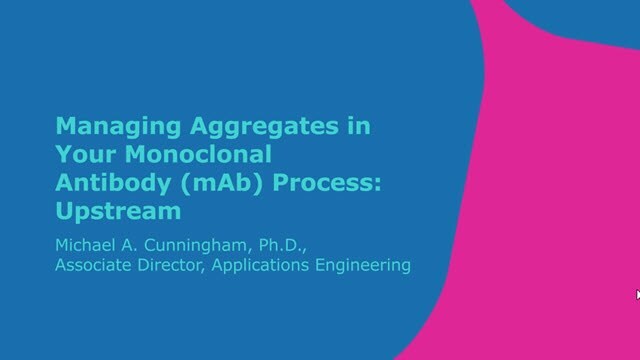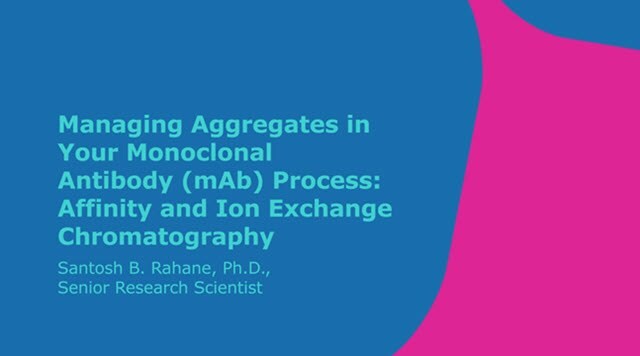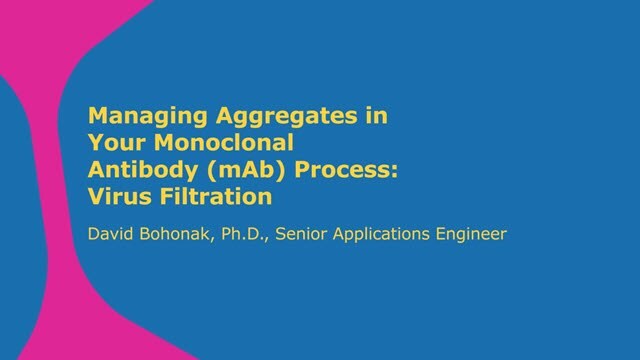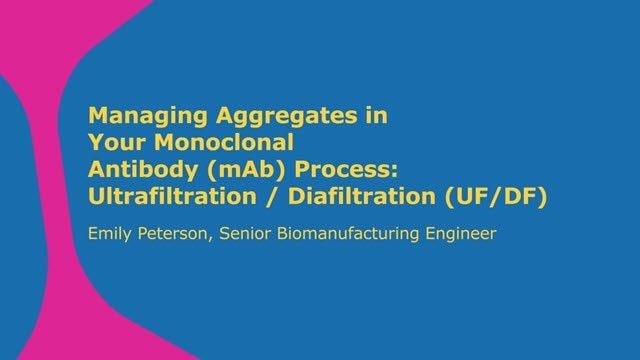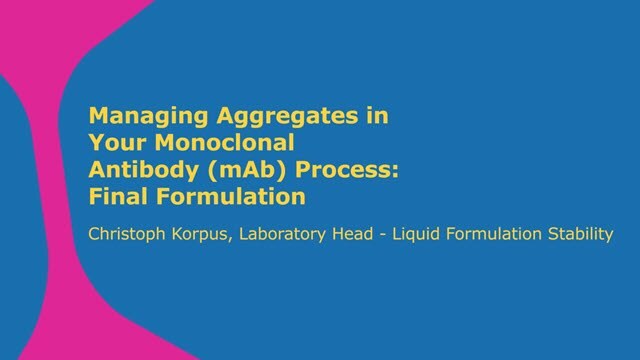Detecting & Removing Aggregates
Biological products such as monoclonal antibodies (mAbs) are prone to protein aggregation during production. Aggregation leads to challenges in the production environment, impacting the efficiency of purification operations. More importantly, it can lead to drug safety concerns for patients; high levels of aggregates can over-stimulate the patient’s immune system, resulting in adverse responses. For these reasons, the aggregate level in drug products is considered a critical quality attribute, and aggregate control throughout both upstream and downstream processing is a focus area for biomanufacturers.
Aggregates are formed by association of multiple protein molecules (multimers) held together permanently or reversibly. They range from as few as two to many associated protein molecules.
Aggregate control starts with clone selection upstream and continues downstream with careful control of elution from capture chromatography and incubation in low pH viral inactivation steps. Excipients and stabilizers can be used to minimize aggregate formation while chromatographic steps downstream are used for efficient aggregate removal. The efficiency of some downstream operations such as virus filtration can be significantly impacted by the presence of aggregates, and adsorptive prefiltration is often used to minimize batch-to-batch variability and enhance process robustness.
Approaches to minimize aggregate formation include:
- Molecule and cell line manipulation
- Careful selection of process consumables and excipients
- Optimization and control of process parameters
Minimizing aggregates improves process efficiency, at a time when flexibility and speed to market are increasingly important.
Related Webinars
Biological product aggregates form within a bioprocessing environment, based on process conditions and biochemistry, and how these are detected.
Antibody aggregate removal can be significantly improved through CEX if the monomeric forms elutes before the aggregates come off the column.
Learn how prefiltration technologies can provide significant increases in the performance of your viral clearance filter.
Workflow

Upstream
The upstream process begins with cell line development and includes all steps up to cell harvest, with the goal of increasing cell densities and product titers to maximize mAb production
Downstream
From cell harvest through final filling into vials, the comprehensive focus of downstream bioprocessing is on purification while controlling bioburden and assuring viral safety, in order to provide confidence in drug safety for patients
Final Filtration and Filling
Final filling of drug products must meet stringent requirements for sterility, integrity, cleanliness, operational safety, and efficiency
Viral Safety
Based on the principles of “prevent, detect, and remove,” viral safety combines risk analysis with careful selection of raw materials, extensive testing of raw materials and process intermediates, and implementation of virus reduction steps in downstream processing
Bioburden Control
All mAb production processes are at risk for microbial contamination, requiring a process design with control strategies to mitigate the risk, as well as bioburden monitoring to assure process control
To continue reading please sign in or create an account.
Don't Have An Account?
